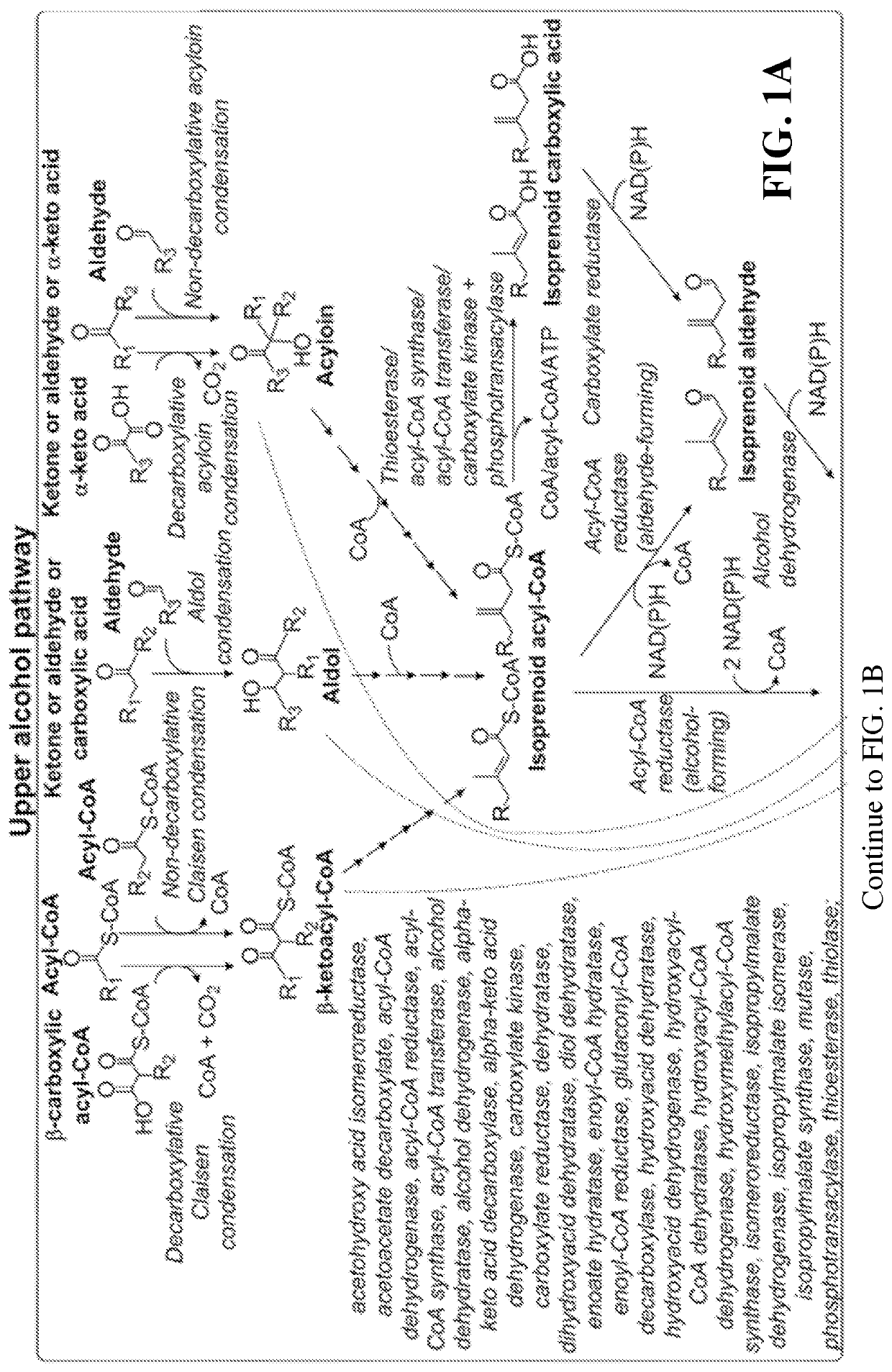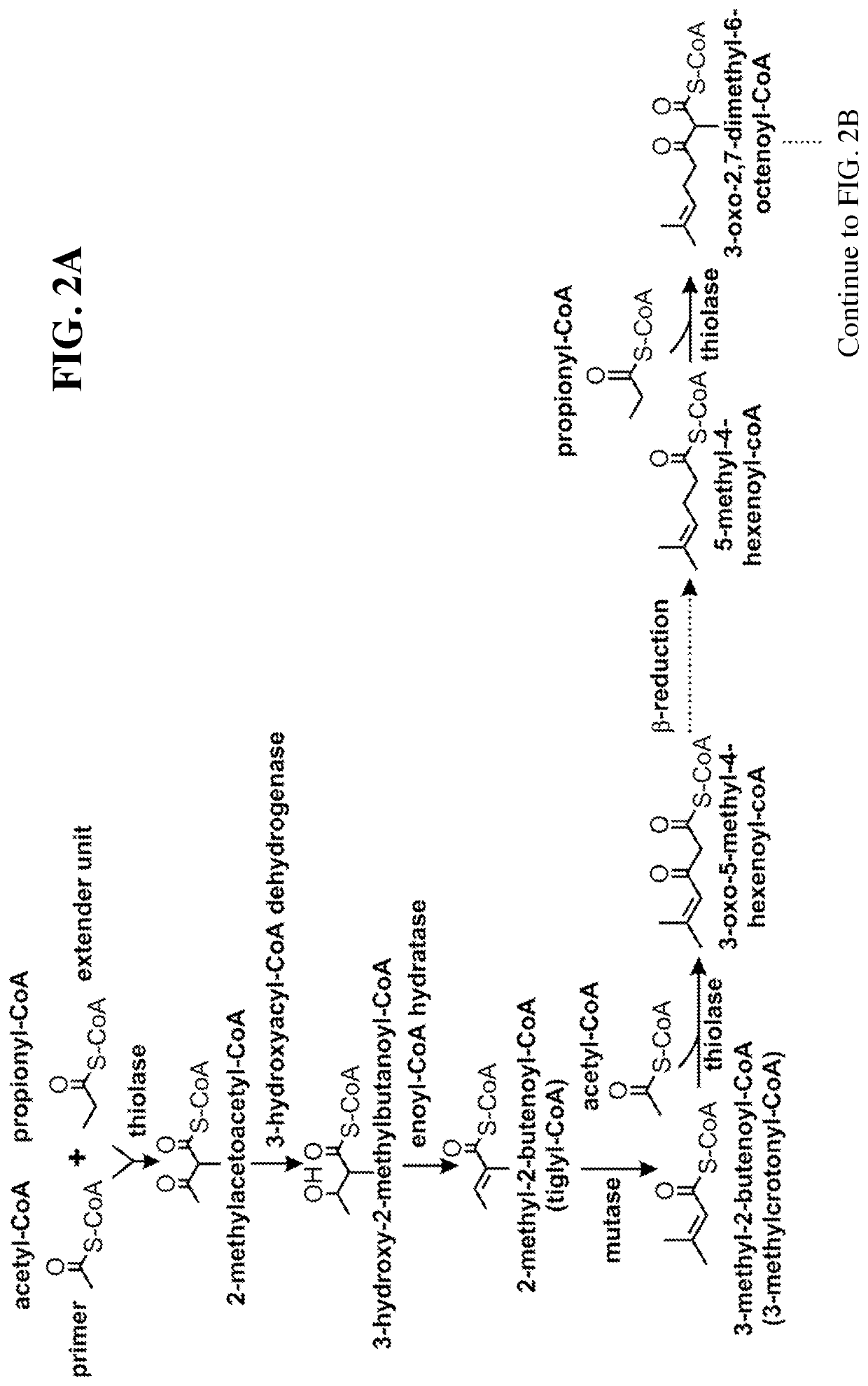Microbial synthesis of isoprenoid precursors, isoprenoids and derivatives including prenylated aromatic compounds
- Summary
- Abstract
- Description
- Claims
- Application Information
AI Technical Summary
Benefits of technology
Problems solved by technology
Method used
Image
Examples
Embodiment Construction
[0104]This disclosure generally relates to the use of enzyme combinations or recombinant microbes comprising the same to make isoprenoid precursors, isoprenoids and derivatives thereof including prenylated aromatic compounds through novel synthetic metabolic pathways. As described herein, the novel pathways for the synthesis of these products exploit enzymes catalyzing Claisen, aldol, or acyloin condensation reactions for the generation of longer chain length intermediates from central carbon metabolites (FIG. 1). Both decarboxylative and non-carboxylative condensations are utilized, enabling product synthesis from a number of different starting compounds. These condensation reactions serve as a platform for the synthesis of isoprenoid precursors, isoprenoids and derivatives thereof, polyketides, and prenylated aromatic compounds when utilized in combination with a variety of metabolic pathways and enzymes for carbon rearrangement and the addition / removal of functional groups (FIG. ...
PUM
 Login to View More
Login to View More Abstract
Description
Claims
Application Information
 Login to View More
Login to View More - R&D
- Intellectual Property
- Life Sciences
- Materials
- Tech Scout
- Unparalleled Data Quality
- Higher Quality Content
- 60% Fewer Hallucinations
Browse by: Latest US Patents, China's latest patents, Technical Efficacy Thesaurus, Application Domain, Technology Topic, Popular Technical Reports.
© 2025 PatSnap. All rights reserved.Legal|Privacy policy|Modern Slavery Act Transparency Statement|Sitemap|About US| Contact US: help@patsnap.com



